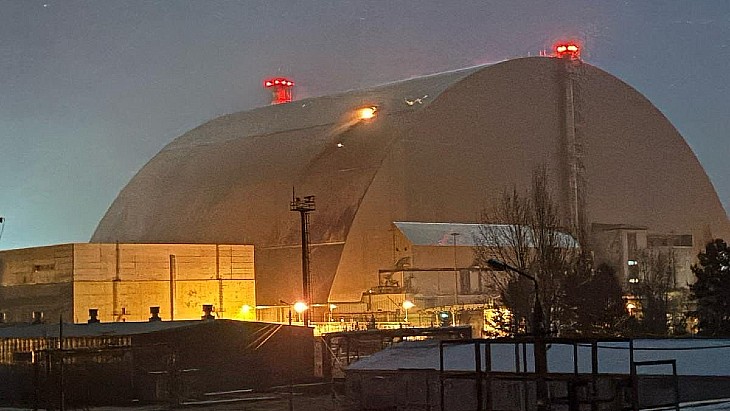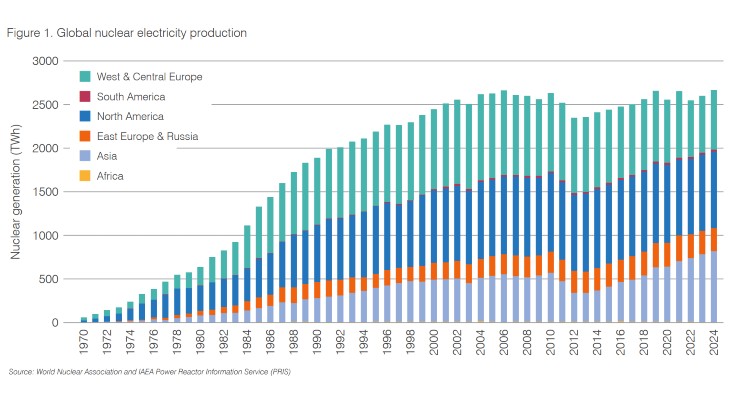Record water levels in the Missouri River have put two nuclear power plants in Nebraska on flood alert. Additional flood prevention measures have been taken at the Fort Calhoun and Cooper plants.
.jpg) |
| 'AquaDams' hold back the water at Fort Calhoun (Image: OPPD) |
On 6 June, Omaha Public Power District (OPPD) declared a 'notification of unusual event' at its Fort Calhoun nuclear power plant due to the rising level of the Missouri River and some onsite flooding. This is the least-serious of four emergency classifications that are standard in the US nuclear industry.
The utility noted projections from the US Army Corps of Engineers that the river level at the plant site - 19 miles (31 kilometres) north of Omaha, Nebraska - was expected to reach 1004 feet (306 metres) above mean sea level and to remain above that level for more than one month. The alert is set to remain in effect at Fort Calhoun until OPPD can be sure the level of the river would remain below 1004 feet.
The single 482 MWe pressurized water reactor at Fort Calhoun has been in safe shutdown since 9 April, when it entered a scheduled refuelling outage.
OPPD said, "In addition to the existing flood-protection at the plant, OPPD employees and contractors have built earth berms (raised barriers) and sandbagged around the switchyards and additional buildings on site. They also are filling water-filled berms around the plant and other major buildings on site, have staged additional diesel fuel inside the Protected Area and are building additional overhead power lines to provide another option for power for the plant's administration building, training centre and one of its warehouses."
Separately OPPD declared a level two alert at the plant on 7 June due to smoke in an electrical switchgear room. An investigation found no fire or release of radiation and the plant was subsequently returned to the level one emergency classification. The Nuclear Regulatory Commission (NRC), which is monitoring the situation at Fort Calhoun, said, "Although the plant briefly lost its normal ability to cool the spent fuel pool, temperatures in the pool remained at safe levels and the plant recovered pool cooling without the need for any of the plant's multiple back-up systems."
On 16 June, OPPD's board of directors approved a measure to authorize plant management to buy any material, equipment or services it needed to prevent flooding at Fort Calhoun, without having to go through the usual procurement process.
"The high volume of water released from upstream dams already has caused some flooding in OPPD's service area," the company said in a statement. It added, "Those water releases continue to pose a threat to the electric system and generation facilities along the river."
The company stressed, "No release of radioactive material requiring offsite response or monitoring has occurred or is expected."
Cooper operating under precaution
Meanwhile, further downriver, the Nebraska Public Power District (NPPD) has also declared a 'notice of unusual event' at its Cooper nuclear power plant, three miles (5 kilometres) southeast of Brownville, Nebraska.
The notification, declared on 19 June, was made as part of the safety and emergency preparedness plan that the plant follows when flooding conditions are in effect. The plan's procedures stipulate that such a notice is declared when the Missouri River's water level reaches 42.5 feet (13 metres) or greater than 899 feet (274 metres) above sea level.
Plant workers began taking preventative measures against rising waters on 30 May. These included filling sandbags, constructing barricades, procuring materials and supplies, and reinforcing the access road. NPPD said that if the level of the river rises to 45.5 feet (14 metres) or 902 feet (275 metres) above sea level, the plant – comprising a single 830 MWe boiling water reactor - would be shut down as a "protective safety measure."
In a statement, NPPD said; "There is no threat to plant employees or to the public; the plant continues to operate safely."
Researched and written
by World Nuclear News












